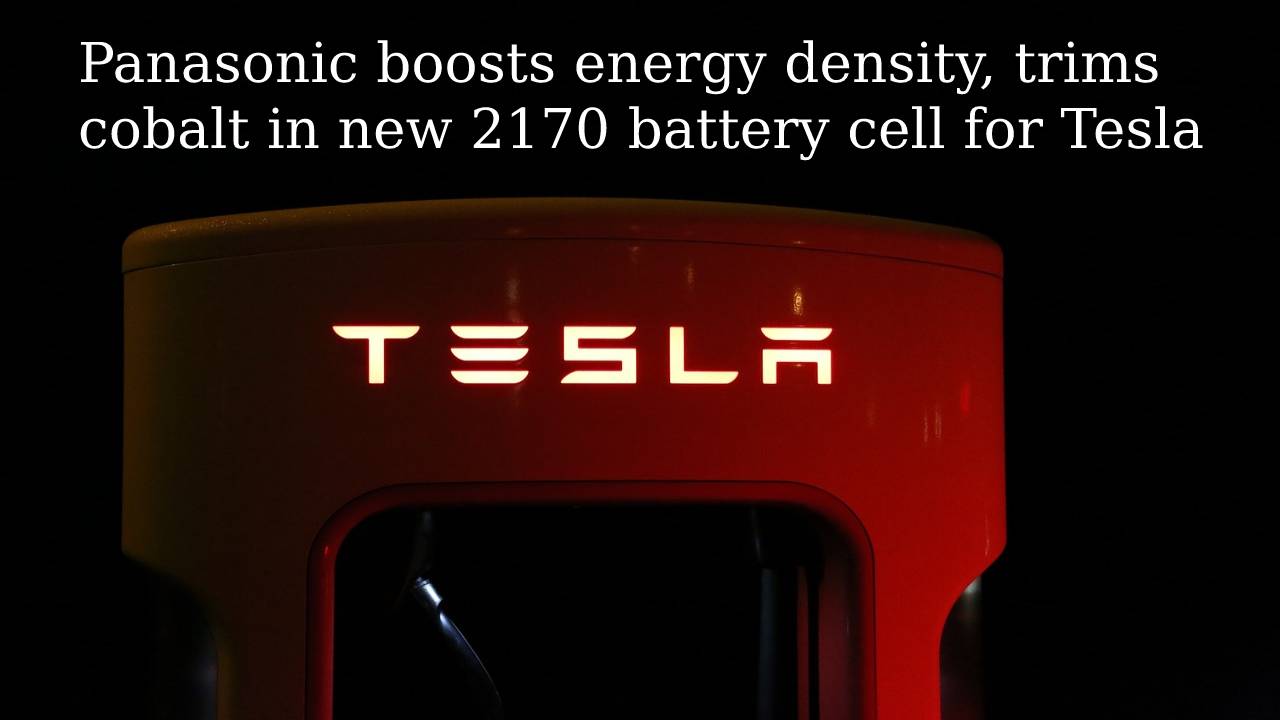Table of Contents
Panasonic 2170 Battery
Panasonic 2170 Battery has lithium-ion cells that improve the energy density by 5% and reduce cobalt expenses.
From September, Panasonic will start converting lines at its factory in Nevada that it operates with Tesla as it prepares to boost the cells’ energy density further, Takamoto said.
To control safety risks associated with higher density and less cobalt, Panasonic is adjusting the composition and design for better thermal stability, Takamoto said.
He also noted there would be various battery requirements coming into play as EV usage diversifies.
Tesla’s Musk has promised to reveal significant battery advances during a “Battery Day” presentation scheduled for Sept 22.
Tesla plans to introduce an EV battery that will last one million miles later this year or early next, jointly
developed with CATL.
Panasonic boosts energy density, trims cobalt in new 2170 battery cell for Tesla
- Panasonic has developed a new battery technology for the “2170” lithium-ion cells that it produces and supplies to Tesla.
- It will manufacture the new 2,170 higher energy density cells at Tesla’s Sparks, Nevada facility, the company said Thursday.
- Panasonic is renovating its battery cell lines, which are scheduled for production in September.
- The company operates 13 lines in a plant with a capacity of 35 gigawatt-hours of batteries per year.
- Allan Swan, president of Panasonic Energy in North America, said all 13 lines would eventually work with the new technology.
- It will not specify a timeline for the entire system to be updated.
- “We will go one step further,” Swan said in a recent interview. “It’s pretty interesting from a Panasonic point of view.
- We are moving towards cobalt-free and more energy-hungry batteries, giving our customers the choice of how they want to use them.
- The plant that will produce these new battery cells is known as Gigafactory 1.
- It is an essential component of Tesla’s plan to increase the world’s battery capacity and reduce electric vehicles’ cost.
- Panasonic was its most important partner in this project, which, according to a recent agreement, will last until at least 2023.
- Panasonic produces 2,170 cells at Gigafactory 1, which Tesla uses to make the Model 3 batteries. Tesla’s new Model Y vehicle has 2170 cells.

Quick Guide of 2170 New Battery Cells
- The battery contains two electrodes. There is a (negative) anode on one side and a (positive) cathode.
- An electrolyte in the center acts as a carrier to move ions the electrodes charging and discharging.
- A cell with a higher energy density means that the engineers have found a way to place more energy in that space.
- A 5% increase in energy density in cells should lead to the same increase as Tesla batteries.
- Tesla Model 3 and Model Y may experience an increase in range.
- Reducing the cobalt content, a rare chemical element that is expensive and with social and environmental costs can lower the parts’ price.
Panasonic in Japan produced 18650 lithium-ion cells
- Panasonic factories in Japan are producing cylindrical “18650” lithium-ion cells, which gives power to Tesla Model S and Model X vehicles.
- It has already improved 18650 cells, resulting in lower cobalt content and higher energy density.
- Panasonic uses NCA, or nickel-cobalt-aluminum, cathode chemistry in the battery cells.
- It will not disclose the amount of cobalt in use today or go into its technical details.
- However, the company said the total amount of cobalt used in Panasonic’s cylindrical car batteries is less than 2% of global demand.
- NCA uses less cobalt than NCM. According to Panasonic, the NCA cathode chemistry has remained improved to reduce the cobalt content.
- The company is trying to reduce the cobalt content in battery cells. Panasonic has already achieved this in its research and development laboratory.
- The commercialization of cobalt-free batteries is likely to begin in a few years.
21700 Battery Performance and Cost
- Battery energy density can increase by more than 20%. 21700 battery power density is better than 18650 batteries.
- The energy density of 21700 battery systems is approximately 20% higher than the 250WH to the original 18650-300 Wh battery system.
- The bulk density of its 21,700 battery is significantly higher than that of the 18650 cell monomer.
Battery system cost down by about 9%
- 21700 costs decreased by about 9%. According to Tesla, the battery information disclosed in the price, the 21,700 lithium battery system is expected to sell for $ 170.
- Compared to the price of 18650 for $ 185, the price decline may be about 8.1%.
- 18650 system costs about 171 US dollars, MH, the transition to 21700, the system’s cost can be about 9% of the decline, to 155 US dollars Zhn.
- Samsung says that after switching to a new 21700 battery, the system can reduce the component and weight by 10% compared to the current storm.
- Thus, it will have a further reduction in the battery’s weight, the energy density of the entire machine

![Panasonic 2170 Battery: Trims cobalt for Tesla [2023]](https://www.webtechradar.com/wp-content/uploads/2021/03/Panasonic-2170-Battery--1200x675.jpg)